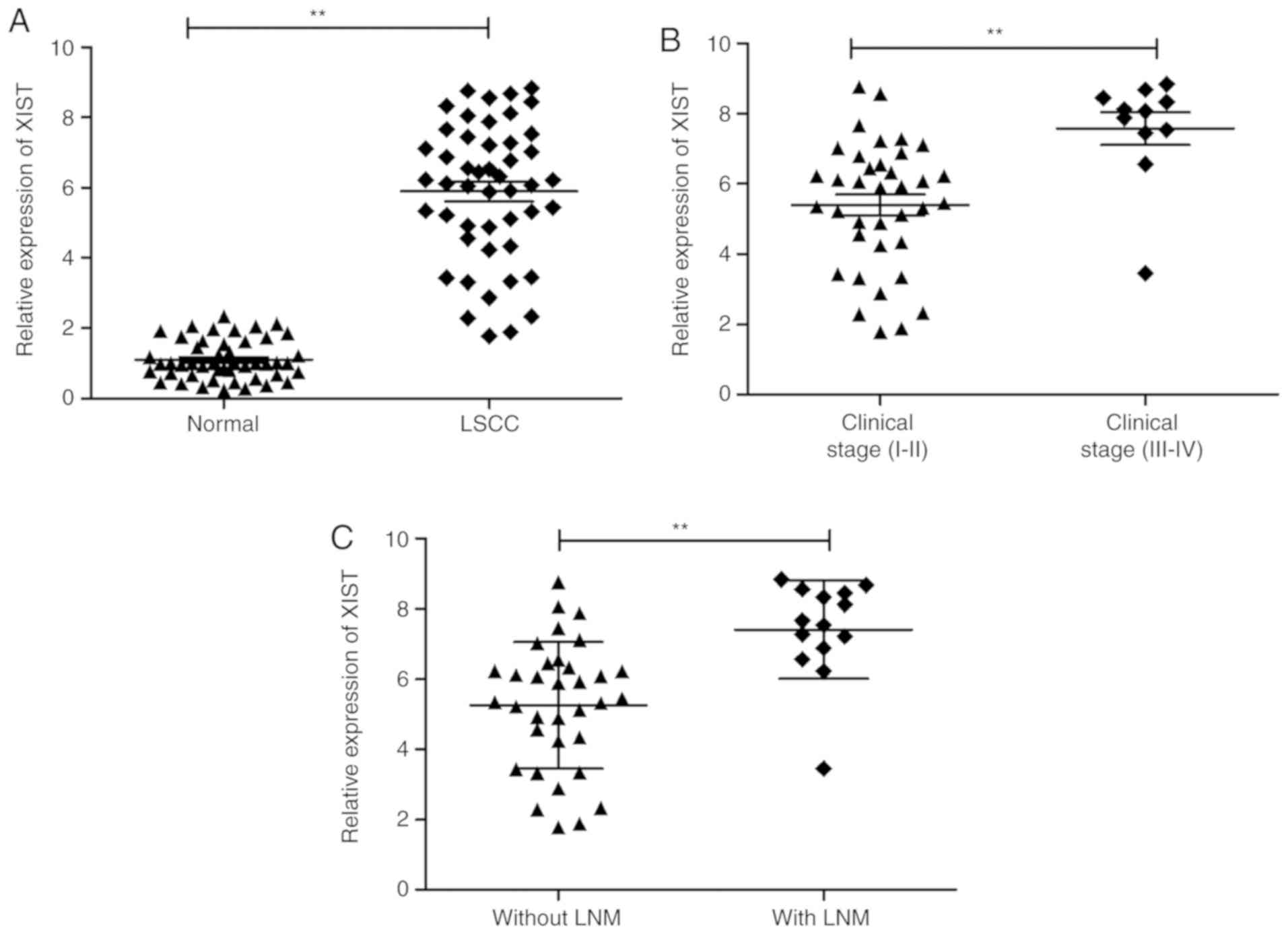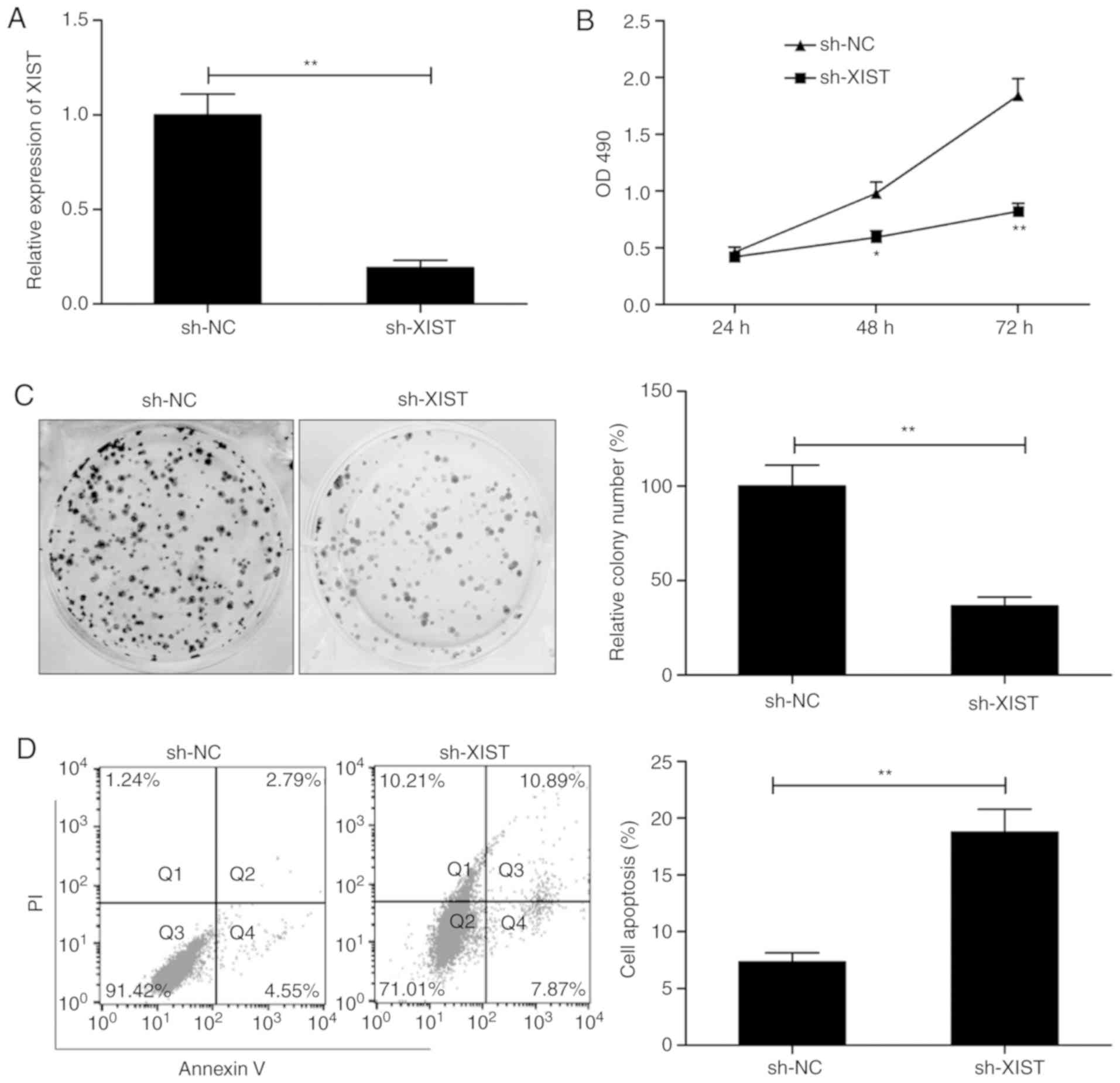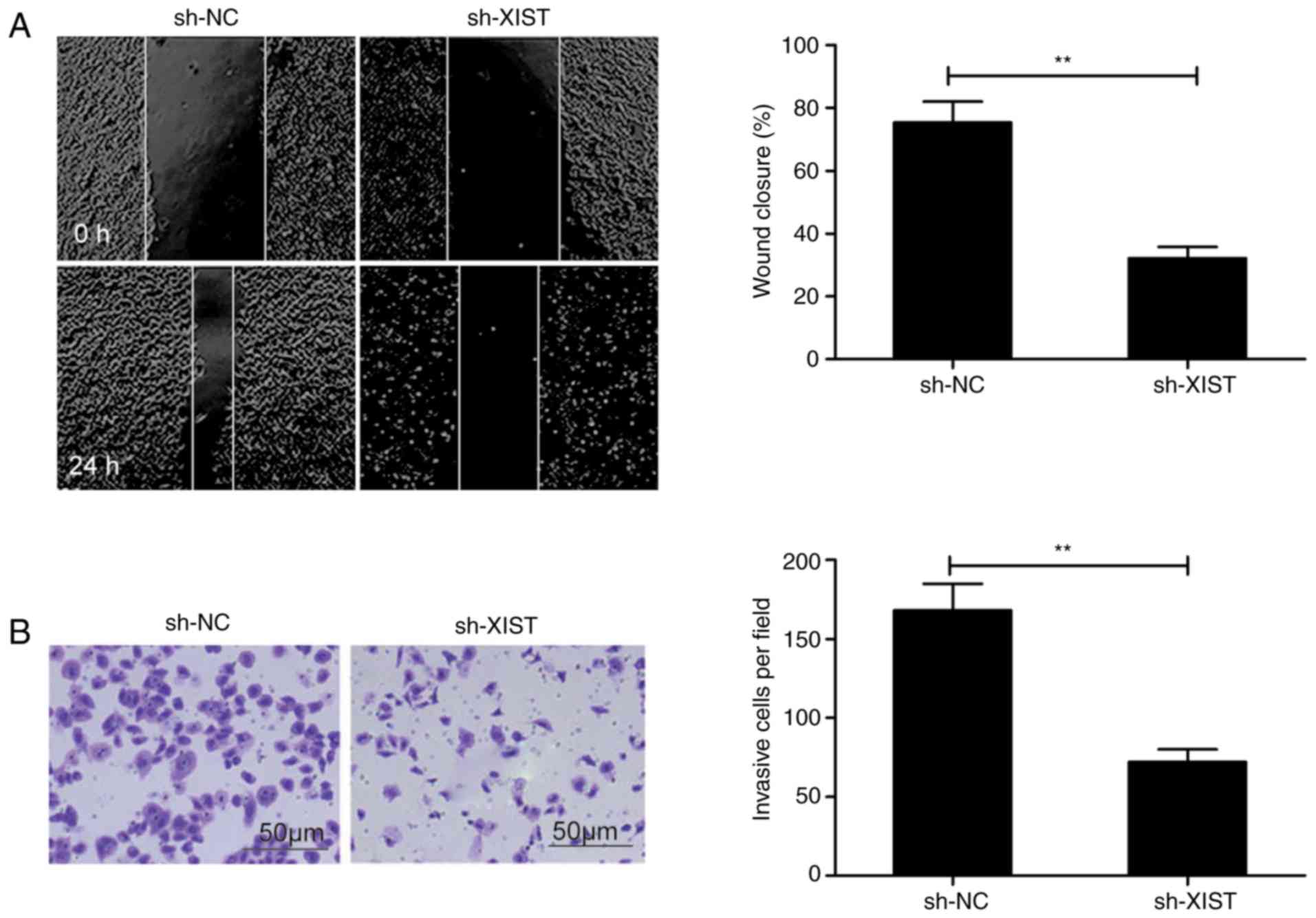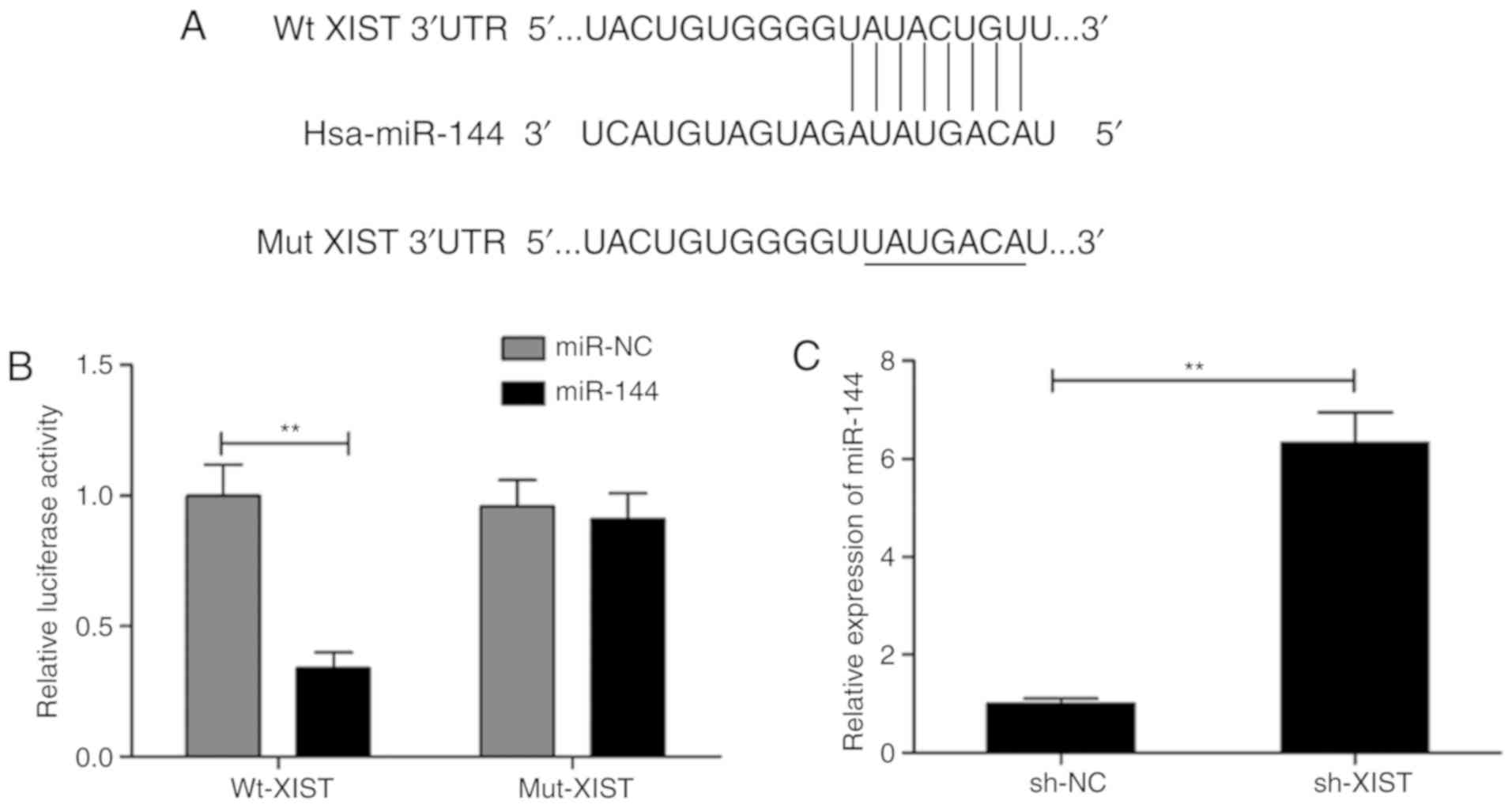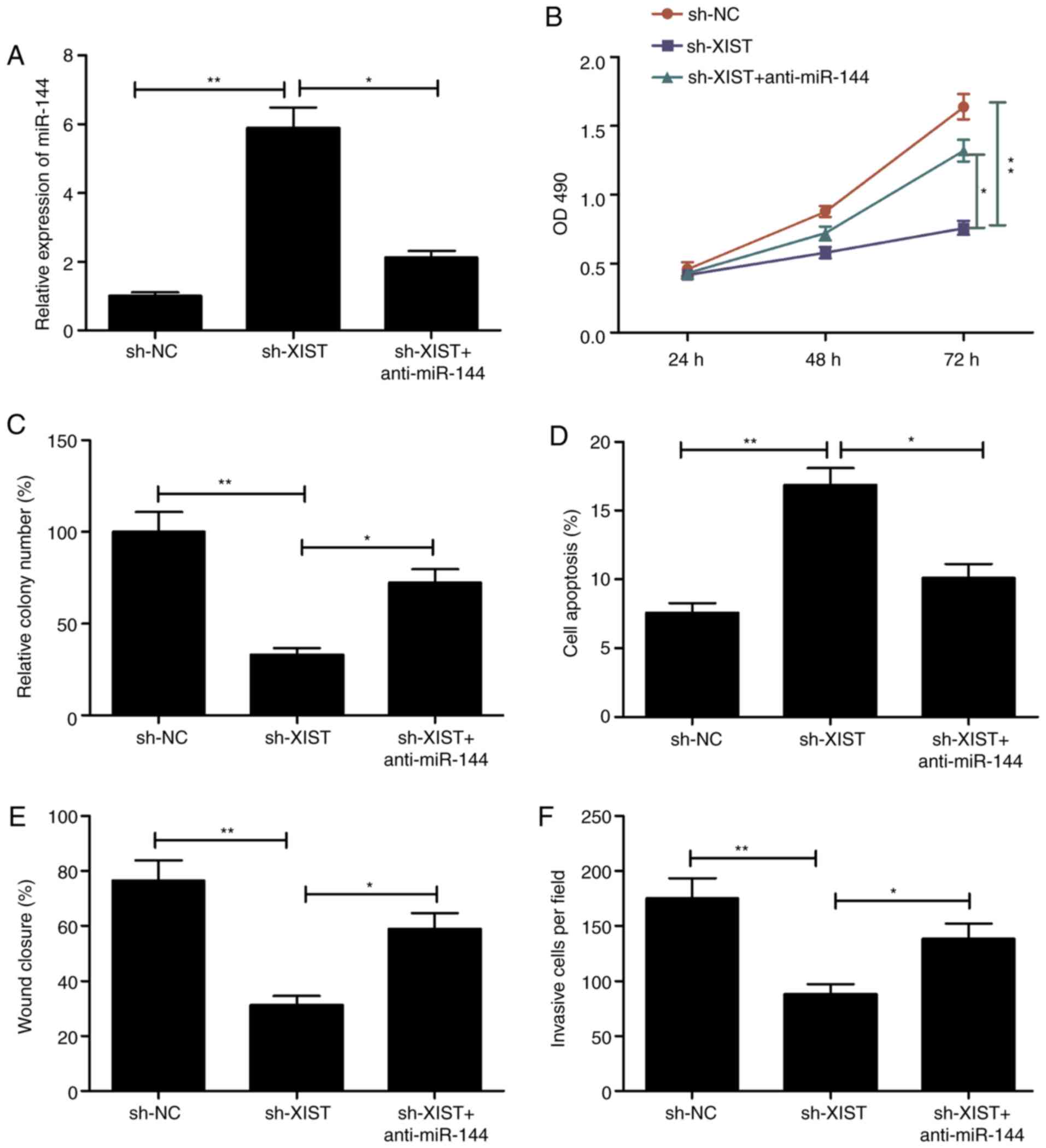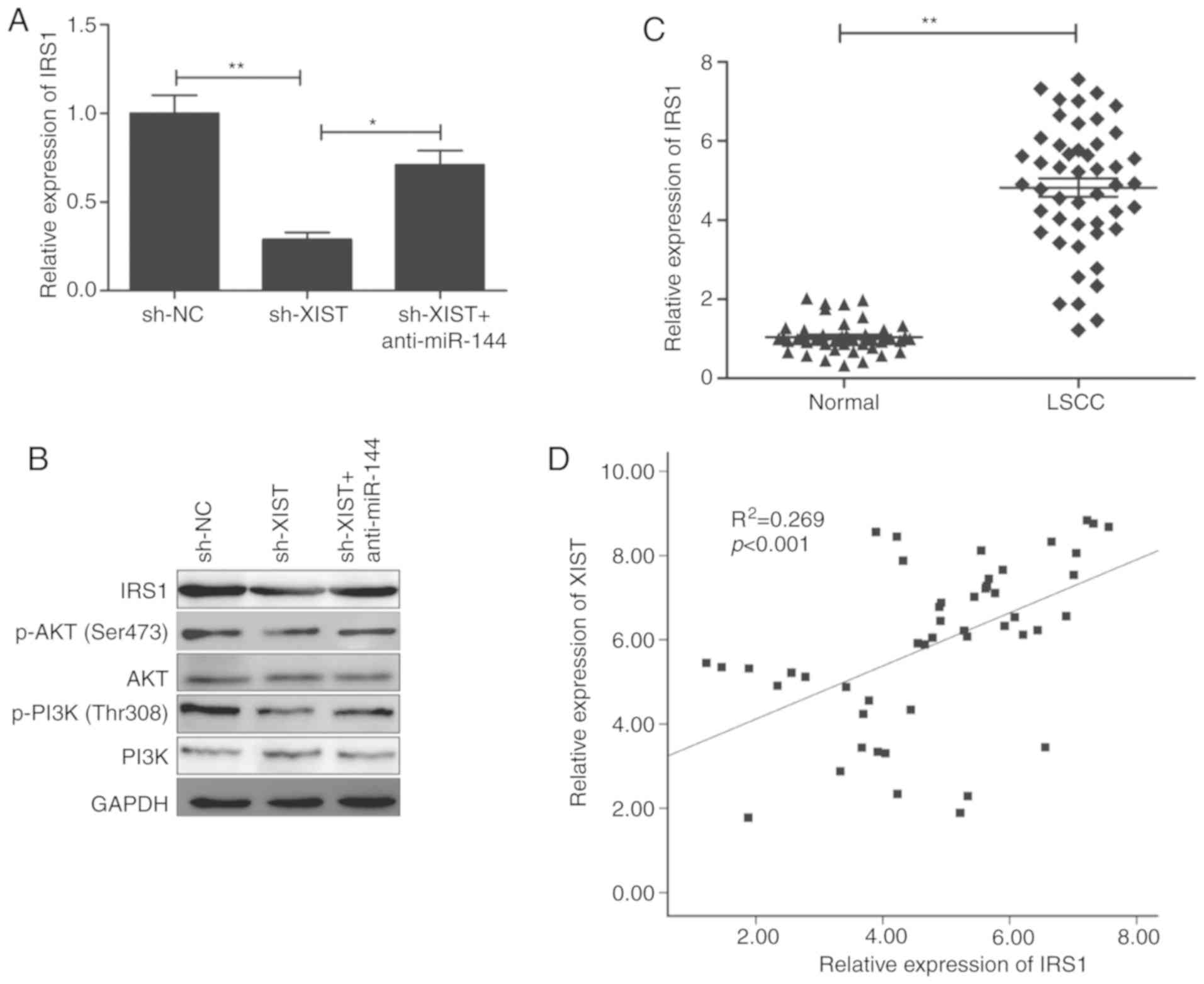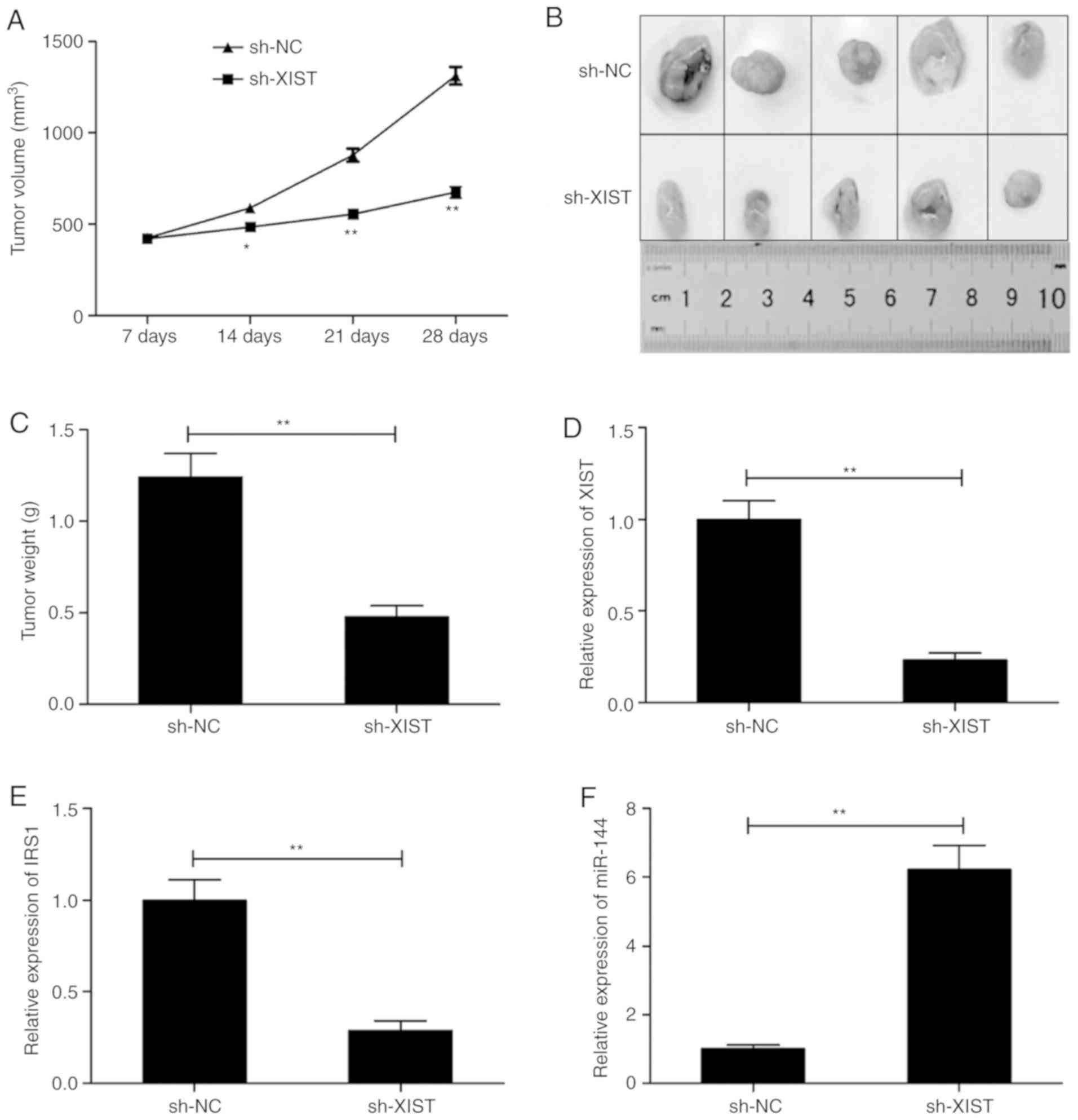|
1
|
Ferlay J, Shin HR, Bray F, Forman D,
Mathers C and Parkin DM: Estimates of worldwide burden of cancer in
2008: GLOBOCAN 2008. Int J Cancer. 127:2893–2917. 2010. View Article : Google Scholar : PubMed/NCBI
|
|
2
|
Chu EA and Kim YJ: Laryngeal cancer:
Diagnosis and preoperative work-up. Otolaryngol Clin North Am.
41:673–695. 2008. View Article : Google Scholar : PubMed/NCBI
|
|
3
|
Rudolph E, Dyckhoff G, Becher H, Dietz A
and Ramroth H: Effects of tumour stage, comorbidity and therapy on
survival of laryngeal cancer patients: A systematic review and a
meta-analysis. Eur Arch Otorhinolaryngol. 268:165–179. 2011.
View Article : Google Scholar : PubMed/NCBI
|
|
4
|
Feng L, Wang R, Lian M, Ma H, He N, Liu H,
Wang H and Fang J: Integrated analysis of long noncoding RNA and
mRNA expression profile in advanced laryngeal squamous cell
carcinoma. PLoS One. 11:e01692322016. View Article : Google Scholar : PubMed/NCBI
|
|
5
|
Lekka E and Hall J: Noncoding RNAs in
disease. FEBS Lett. 592:2884–2900. 2018. View Article : Google Scholar : PubMed/NCBI
|
|
6
|
Sun X, Song Y, Tai X, Liu B and Ji W:
MicroRNA expression and its detection in human supraglottic
laryngeal squamous cell carcinoma. Biomed Rep. 1:743–746. 2013.
View Article : Google Scholar : PubMed/NCBI
|
|
7
|
Zhang Y, Chen Y, Yu J, Liu G and Huang Z:
Integrated transcriptome analysis reveals miRNA-mRNA crosstalk in
laryngeal squamous cell carcinoma. Genomics. 104:249–256. 2014.
View Article : Google Scholar : PubMed/NCBI
|
|
8
|
Rafiee A, Riazi-Rad F, Havaskary M and
Nuri F: Long noncoding RNAs: Regulation, function and cancer.
Biotechnol Genet Eng Rev. 34:153–180. 2018. View Article : Google Scholar : PubMed/NCBI
|
|
9
|
Zhao R, Li FQ, Tian LL, Shang DS, Guo Y,
Zhang JR and Liu M: Comprehensive analysis of the whole coding and
non-coding RNA transcriptome expression profiles and construction
of the circRNA-lncRNA co-regulated ceRNA network in laryngeal
squamous cell carcinoma. Funct Integr Genomics. 19:109–121. 2019.
View Article : Google Scholar : PubMed/NCBI
|
|
10
|
Chen J, Shen Z, Deng H, Zhou W, Liao Q and
Mu Y: Long non-coding RNA biomarker for human laryngeal squamous
cell carcinoma prognosis. Gene. 671:96–102. 2018. View Article : Google Scholar : PubMed/NCBI
|
|
11
|
Zhang C, Gao W, Wen S, Wu Y, Fu R, Zhao D,
Chen X and Wang B: Potential key molecular correlations in
laryngeal squamous cell carcinoma revealed by integrated analysis
of mRNA, miRNA and lncRNA microarray profiles. Neoplasma.
63:888–900. 2016. View Article : Google Scholar : PubMed/NCBI
|
|
12
|
Pintacuda G, Young AN and Cerase A:
Function by structure: Spotlights on xist long non-coding RNA.
Front Mol Biosci. 4:902017. View Article : Google Scholar : PubMed/NCBI
|
|
13
|
Zhu J, Kong F, Xing L, Jin Z and Li Z:
Prognostic and clinicopathological value of long noncoding RNA XIST
in cancer. Clin Chim Acta. 479:43–47. 2018. View Article : Google Scholar : PubMed/NCBI
|
|
14
|
Mao H, Wang K, Feng Y, Zhang J, Pan L,
Zhan Y, Sheng H and Luo G: Prognostic role of long non-coding RNA
XIST expression in patients with solid tumors: A meta-analysis.
Cancer Cell Int. 18:342018. View Article : Google Scholar : PubMed/NCBI
|
|
15
|
Livak KJ and Schmittgen TD: Analysis of
relative gene expression data using real-time quantitative PCR and
the 2(-Delta Delta C(T)) method. Methods. 25:402–408. 2001.
View Article : Google Scholar : PubMed/NCBI
|
|
16
|
Li JH, Liu S, Zhou H, Qu LH and Yang JH:
StarBase v2.0: Decoding miRNA-ceRNA, miRNA-ncRNA and protein-RNA
interaction networks from large-scale CLIP-Seq data. Nucleic Acids
Res. 2014:D92–D97. 2014. View Article : Google Scholar
|
|
17
|
Yang C, Wu D, Gao L, Liu X, Jin Y, Wang D,
Wang T and Li X: Competing endogenous RNA networks in human cancer:
Hypothesis, validation, and perspectives. Oncotarget.
7:13479–13490. 2016.PubMed/NCBI
|
|
18
|
Ergun S and Oztuzcu S: Oncocers:
CeRNA-mediated cross-talk by sponging miRNAs in oncogenic pathways.
Tumour Biol. 36:3129–3136. 2015. View Article : Google Scholar : PubMed/NCBI
|
|
19
|
Wu X, Cui CL, Chen WL, Fu ZY, Cui XY and
Gong X: MiR-144 suppresses the growth and metastasis of laryngeal
squamous cell carcinoma by targeting IRS1. Am J Transl Res. 8:1–11.
2016.PubMed/NCBI
|
|
20
|
Zhang SY, Lu ZM, Lin YF, Chen LS, Luo XN,
Song XH, Chen SH and Wu YL: MiR-144-3p, a tumor suppressive
microRNA targeting ETS-1 in laryngeal squamous cell carcinoma.
Oncotarget. 7:11637–11650. 2016.PubMed/NCBI
|
|
21
|
Law NC, White MF and Hunzicke-Dunn ME: G
protein-coupled receptors (GPCRs) that signal via protein kinase A
(PKA) cross-talk at insulin receptor substrate 1 (IRS1) to activate
the phosphatidylinositol 3-kinase (PI3K)/AKT pathway. J Biol Chem.
291:27160–27169. 2016. View Article : Google Scholar : PubMed/NCBI
|
|
22
|
Yuan YL, Lin BQ, Zhang CF, Cui LL, Ruan
SX, Yang ZL, Li F and Ji D: Timosaponin B-II ameliorates
palmitate-induced insulin resistance and inflammation via
IRS-1/PI3K/Akt and IKK/NF-[Formula: See text]B pathways. Am J Chin
Med. 44:755–769. 2016. View Article : Google Scholar : PubMed/NCBI
|
|
23
|
Yang S, Wang J, Ge W and Jiang Y: Long
non-coding RNA LOC554202 promotes laryngeal squamous cell carcinoma
progression through regulating miR-31. J Cell Biochem.
119:6953–6960. 2018. View Article : Google Scholar : PubMed/NCBI
|
|
24
|
Shen Z, Hao W, Zhou C, Deng H, Ye D, Li Q,
Lin L, Cao B and Guo J: Long non-coding RNA AC026166.2-001 inhibits
cell proliferation and migration in laryngeal squamous cell
carcinoma by regulating the miR-24-3p/p27 axis. Sci Rep.
8:33752018. View Article : Google Scholar : PubMed/NCBI
|
|
25
|
Qu L, Jin M, Yang L, Sun C, Wang P, Li Y,
Tian L, Liu M and Sun Y: Expression of long non-coding RNA
HOXA11-AS is correlated with progression of laryngeal squamous cell
carcinoma. Am J Transl Res. 10:573–580. 2018.PubMed/NCBI
|
|
26
|
Li C, Wan L, Liu Z, Xu G, Wang S, Su Z,
Zhang Y, Zhang C, Liu X, Lei Z and Zhang HT: Long non-coding RNA
XIST promotes TGF-β-induced epithelial-mesenchymal transition by
regulating miR-367/141-ZEB2 axis in non-small-cell lung cancer.
Cancer Lett. 418:185–195. 2018. View Article : Google Scholar : PubMed/NCBI
|
|
27
|
Chang S, Chen B, Wang X, Wu K and Sun Y:
Long non-coding RNA XIST regulates PTEN expression by sponging
miR-181a and promotes hepatocellular carcinoma progression. BMC
Cancer. 17:2482017. View Article : Google Scholar : PubMed/NCBI
|
|
28
|
Hu C, Liu S, Han M, Wang Y and Xu C:
Knockdown of lncRNA XIST inhibits retinoblastoma progression by
modulating the miR-124/STAT3 axis. Biomed Pharmacother.
107:547–554. 2018. View Article : Google Scholar : PubMed/NCBI
|
|
29
|
Yang C, Wu K, Wang S and Wei G: Long
non-coding RNA XIST promotes osteosarcoma progression by targeting
YAP via miR-195-5p. J Cell Biochem. 119:5646–5656. 2018. View Article : Google Scholar : PubMed/NCBI
|
|
30
|
Xu Y and Wang J and Wang J: Long noncoding
RNA XIST promotes proliferation and invasion by targeting
miR-141 in papillary thyroid carcinoma. OncoTargets Ther.
11:5035–5043. 2018. View Article : Google Scholar
|
|
31
|
Sun N, Zhang G and Liu Y: Long non-coding
RNA XIST sponges miR-34a to promotes colon cancer progression via
Wnt/β-catenin signaling pathway. Gene. 665:141–148. 2018.
View Article : Google Scholar : PubMed/NCBI
|
|
32
|
Hu Y, Deng C, Zhang H, Zhang J, Peng B and
Hu C: Long non-coding RNA XIST promotes cell growth and metastasis
through regulating miR-139-5p mediated Wnt/β-catenin signaling
pathway in bladder cancer. Oncotarget. 8:94554–94568. 2017.
View Article : Google Scholar : PubMed/NCBI
|
|
33
|
Cheng Z, Li Z, Ma K, Li X, Tian N, Duan J,
Xiao X and Wang Y: Long non-coding RNA XIST promotes glioma
tumorigenicity and angiogenesis by acting as a molecular sponge of
miR-429. J Cancer. 8:4106–4116. 2017. View Article : Google Scholar : PubMed/NCBI
|
|
34
|
Ma L, Zhou Y, Luo X, Gao H, Deng X and
Jiang Y: Long non-coding RNA XIST promotes cell growth and invasion
through regulating miR-497/MACC1 axis in gastric cancer.
Oncotarget. 8:4125–4135. 2017.PubMed/NCBI
|
|
35
|
Zheng R, Lin S, Guan L, Yuan H, Liu K, Liu
C, Ye W, Liao Y, Jia J and Zhang R: Long non-coding RNA XIST
inhibited breast cancer cell growth, migration, and invasion via
miR-155/CDX1 axis. Biochem Biophys Res Commun. 498:1002–1008. 2018.
View Article : Google Scholar : PubMed/NCBI
|
|
36
|
Wang C, Qi S, Xie C, Li C, Wang P and Liu
D: Upregulation of long non-coding RNA XIST has anticancer effects
on epithelial ovarian cancer cells through inverse downregulation
of hsa-miR-214-3p. J Gynecol Oncol. 29:e992018. View Article : Google Scholar : PubMed/NCBI
|
|
37
|
Huang Y: The novel regulatory role of
lncRNA-miRNA-mRNA axis in cardiovascular diseases. J Cell Mol Med.
22:5768–5775. 2018. View Article : Google Scholar : PubMed/NCBI
|
|
38
|
Reiss K, Del Valle L, Lassak A and
Trojanek J: Nuclear IRS-1 and cancer. J Cell Physiol.
227:2992–3000. 2012. View Article : Google Scholar : PubMed/NCBI
|
|
39
|
Baserga R: The contradictions of the
insulin-like growth factor 1 receptor. Oncogene. 19:5574–5581.
2000. View Article : Google Scholar : PubMed/NCBI
|















